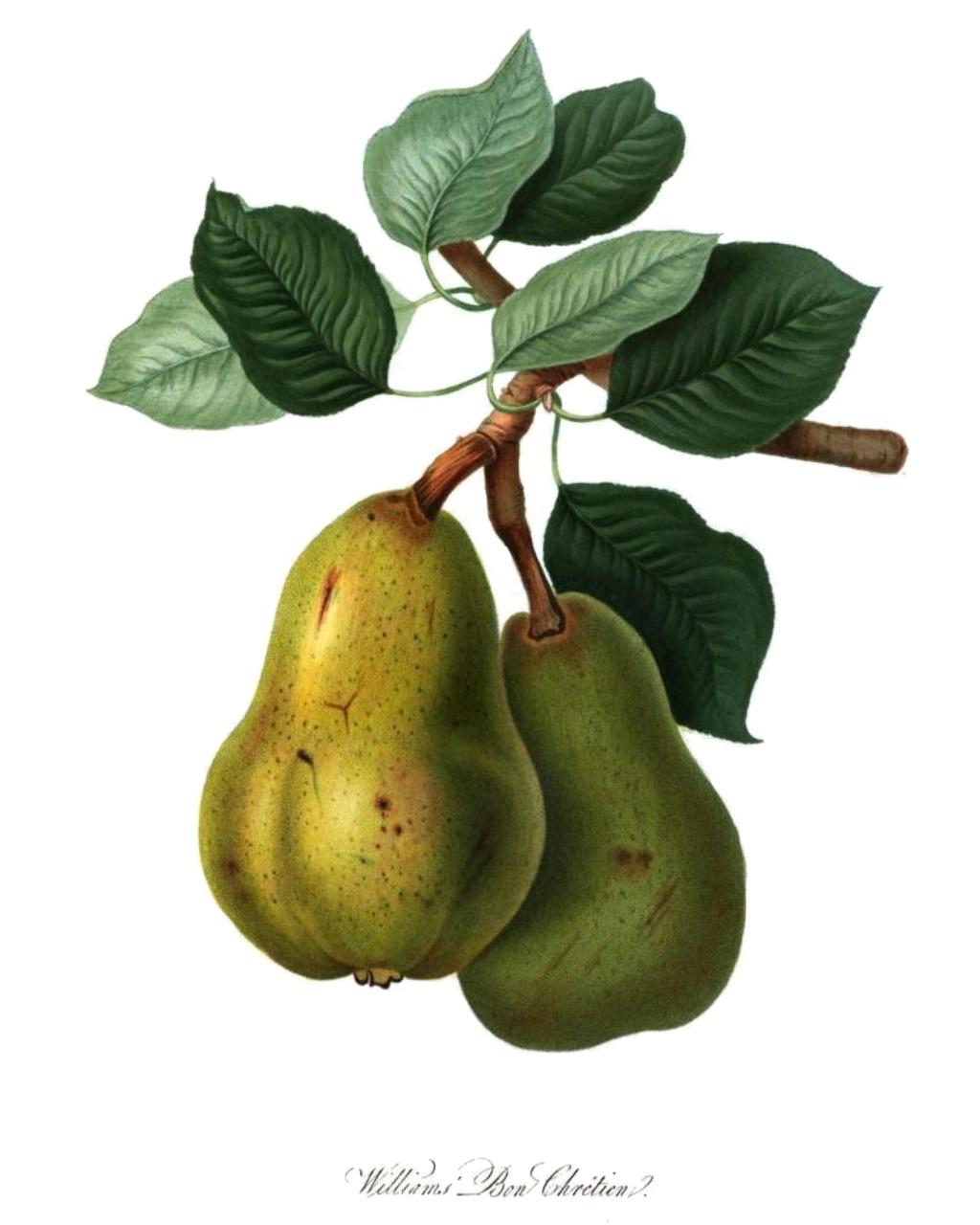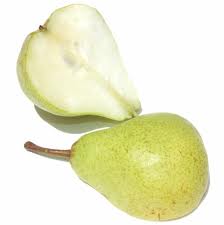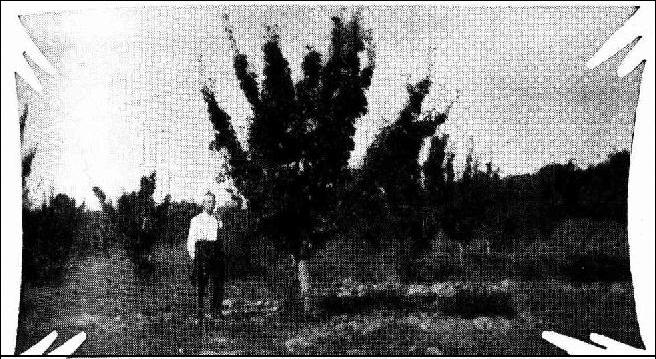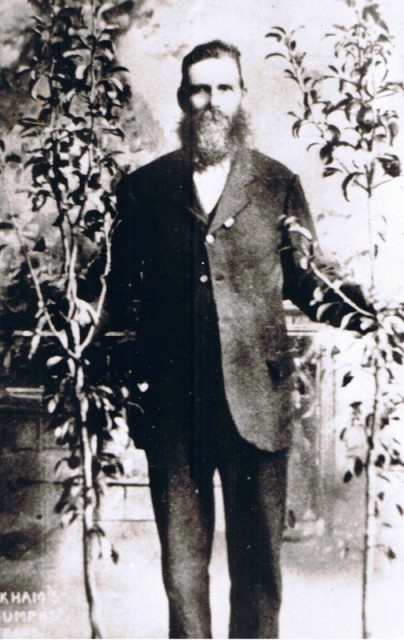March 10-16, 2024: Issue 617
Early Autumn Pears: William's + Packham's
William's Pears
Williams Pears are coming into local shops meaning the crop is starting to come in and high quality sweet fruit is now available at a great price, averaging around $2 to $3 a kilo.
The Williams pear is thought to date from 1765 to 1770 from the yard of an Aldermaston, England, schoolmaster named John Stair, giving rise to the now-obscure synonyms 'Aldermaston' pear and 'Stairs' pear. A nurseryman named Williams later acquired the variety, and after introducing it to the rest of England, the pear became known as the Williams Pear. However, the pear's full name is Williams' Bon Chretien, or "Williams' good Christian."
The fruit has a bell shape, considered the traditional pear shape in the west, and its green skin turns yellow upon later ripening, although red-skinned derivative varieties exist.
This variety can be used in salads and deserts. This week a few recipe ideas to keep it light while the weather is still warm and enjoy these seasonal fruits.
Green Bean and Goats Cheese Salad
Ingredients
250-300 grams fresh green beans – blanch slightly and chop into bite sized pieces
1 bunch of asparagus
2 ripe pears
2 x ripe avocado
½ bunch of parsley
2 x tomatoes
75 grams of goats cheese
1 can of chick peas, drained
Cut all ingredients into bite-sized pieces and toss together while the beans are just warm still. Toss in 1 cup of chick peas and toss. Serve with crusty bread. Other ingredients that suit each other in this salad are some fresh pancetta for those who like meat. Nuts such as almonds or pine nuts also work well in this recipe and will give those added vitamins, fats and protein boost.
Autumn Pear cake
Ingredients
190 grams butter
1 cup sugar - or half and half - with honey
3 eggs
1 1/2 cups self raising flour
1/2 teaspoon of salt
3/4 cup of dates
1/2 teaspoon pure vanilla essence
1/2 teaspoon cinnamon
5 pears cut in half, pith removed
1 cup Greek yoghurt or equivalent thick good yoghurt
First off heat your oven to 160 if fan forced, 150 if not - this is a dense moist cake that will take an hour and a half to cook slowly. Also boil the jug and place the deseeded dates in a bowl and cover them - this makes the dates softer and easier to incorporate into the cake batter mix. Liberally grease a deep cake pan of at least 22cm.
Place your fruit into the cake tin base with either the cut flat side down or, if you want the outer side showing, place that down - rub with lemon juice to prevent the flesh from going brown. Remember when you turn the cake out it is the fruit side you have placed down first that will show.
Cream together the butter and sugar and add in the vanilla essence at this stage - this will give that vanilla taste throughout the cake rather than adding it in later. Once the butter/sugar mix has become lighter in colour, add in your eggs one at a team and beat to incorporate.
Sift your dry ingredients together, the flour, cinnamon and don't forget the salt - people can omit this ingredient and that will lead to a starchy taste to your cake.
Put your dry ingredients atop the butter mix along with the cup of yoghurt and the dates, strained of the hot water. Mix until all ingredients are incorporated - if your mix is too dry, add in an extra spoon of yogurt, too wet, a spoonful more of flour.
Pour over the fruit - your cake batter should be still a bit stiff. Smooth out so it's fairly level, but don't fuss too much - the more you stir a cake batter the tougher you make it, so take the batter to where everything is well mixed but don't keep stirring, get it into the pan and into the oven.
Cook on the low heat for around an hour and a half or until the mix is just coming away from the tin edge. Let it sit in the cake tin for at least 2 to 5 minutes before turning out.
Serve warm with whipped cream, ice cream or yoghurt or just plain. Will keep for around a week if you store it in the fridge or a cake container. The fridge would be better if the weather is humid.

Packham's Pears
Late Autumn and early Winter is when we see the crop of Packham pears arrive in urban areas. This wonderful Australian cultivar, developed in rural NSW, is firm enough to use as is in salads and works well as a dessert essential as it is able to hold its shape. They are bursting with vitamin C, loaded with fibre and low in calories if you want a sweet treat without piling on winter weight.
Pear, Parmesan and Rocket salad
 Ingredients
Ingredients
50g (1/2 bunch) rocket, trimmed
1/2 small green oakleaf lettuce, washed, dried
50g piece Parmesan, shaved
40g (1/3 cup) walnut pieces
2 tbs chopped fresh chives
1 (about 300g) ripe pear (like beurre bosc, Packham or williams)
Dressing
2 tbs olive oil
1 tbs cider vinegar
Salt & ground black pepper, to taste
Dressing: place the olive oil and vinegar in a small bowl. Season with salt and pepper and whisk to combine.
Place the rocket, lettuce, Parmesan, walnuts and chives in a large bowl. Peel, quarter and core the pear. Slice each quarter into four. Add to the salad with the dressing and toss well. Serve immediately.
Warm sticky pear cake
Ingredients
150g (1 cup) dried pitted dates
250ml (1 cup) boiling water
1 tsp bicarbonate of soda
215g (1 cup) caster sugar
180g butter, at room temperature
1 egg
225g (1 1/2 cups) self-raising flour
1 tsp ground cinnamon
3 Packham pears, peeled, cored, cut into 2cm pieces
185ml (3/4 cup) pouring cream
200g (1 cup, firmly packed) brown sugar
Preheat oven to 180°C. Line a round 22cm (base measurement) cake pan with non-stick baking paper. Coarsely chop the dates and place in a heatproof bowl. Add the water and bicarbonate of soda. Set aside to cool. Use a fork to coarsely mash.
Use an electric beater to beat the caster sugar and 125g of the butter in a bowl until pale and creamy. Beat in the egg. Sift the flour and cinnamon over the egg mixture. Add the date mixture and pear. Use a large metal spoon to fold until well combined. Pour into the lined pan. Bake for 1 hour 10 minutes or until a skewer inserted into the centre comes out clean.
Place the cream, brown sugar and remaining butter in a small saucepan over medium heat. Cook, stirring, for 5 minutes or until well combined.
Slice the cake and drizzle over the warm toffee sauce to serve.
Packham’s Triumph – The Australian Pear
A Paragon Pear. Molong - Monday.-Mr. Charles Packham, an enthusiastic orchardist at Garra, has achieved much success at recent shows with a new pear propagated by him, which last year the Agricultural Department recommende him to call "Packham Triumph." 'He recently forwarded more samples to the department, on which Mr. Allen, fruit expert, reports: "This is without exception the best pear I have ever seen, and is well named Packham's Triumph. It is a triumph in pear culture, the flavour being quite unique-a beautiful sugary flavour, yet sufficiently tart to prevent it becoming insipid-melting, juicy, and pleasantly perfumed." A Paragon Pear. (1901, May 18). Goulburn Evening Penny Post(NSW : 1881 - 1940), p. 6. Retrieved from http://nla.gov.au/nla.news-article98726178
THE PACKHAM TRIUMPH PEAR.
Mr. C. H. Packham, of Garra, near Molong, has received an order from Mr. Luther Burbank, of the United States, for some grafting wood of his famous Packham's Triumph pear, declared by Australian fruit experts to be the best variety known. Mr. Burbank has written that he is much interested in the pear in question. THE PACKHAM TRIUMPH PEAR. (1906, September 26). The Farmer and Settler (NSW : 1906 - 1957), p. 5. Retrieved from http://nla.gov.au/nla.news-article109686071Historic Molong ORCHARD That Gave To The WORLD A New And DELICIOUS PEAR
. THE ORIGINAL PACKHAM’S TRIUMPH PEAR TREE, in the old orchard on Mr. S. W. Packham’s property at Garra near Molong. It was here that the late Charles Henry Packham carried out his successful experiments in cross-pollination. Photo courtesy S.W.Packham.
THE ORIGINAL PACKHAM’S TRIUMPH PEAR TREE, in the old orchard on Mr. S. W. Packham’s property at Garra near Molong. It was here that the late Charles Henry Packham carried out his successful experiments in cross-pollination. Photo courtesy S.W.Packham.
THE orchards surrounding the little village of Garra, in the Molong district of central western New South Wales, were the scene of extensive experiments in the hybridisation of fruits during the nineties of the last century. A large measure of success attended the efforts of at least one resident of that district—Mr. Charles Henry Packham, who had been specialising in the pollination and cross-pollination of pears, but little did he think when he evolved what was later to be known as Packham's Triumph, that his name would be perpetuated throughout the civilised world by the popularity of this delicious fruit.

CHARLES HENRY PACKHAM, who died in 1909, at the age of 67years, was born in the Parramatta district, his father being one of the pioneer settlers, and the subject of this article spent a life-long association with primary production, principally in the Molong district.
Eventually, he purchased "Clifton," Garra, where he at first conducted general farming operations. There was a small orchard on the property, in which he began to take a keen interest, and started experimenting along original lines; he was an intelligent experimentalist with an ideal, but his methods were not those which lead to great financial success-rather those of one who delights to give something new and better to his fellow man, without thought of reward.
IN 1895 came the great success of his work in this direction, following the pollination of the Eusdale St. Germain (sometimes called the Bell)pear with the Williams' Bon Chretien. From this pear (which contained from five to seven seeds) seedlings were planted out, until, at his death in 1909, there were 20,000 seedlings on his Garra property. The seedlings were planted out one foot apart in rows, with six feet between the rows. The idea was that every sixth tree in the row was to be the main tree; he would take buds from each tree for the main, and the rest of the work he would leave to nature to complete.
HIS enthusiasm for this work was so great that he was experimenting continuously along new lines in quest of something new.
On one occasion, he exhibited at the Sydney Royal Show a pear tree about three feet high, bearing fruit. This he obtained by selecting a short upright limb of a Bell pear tree, inserting the limb in a hole cut in a piece of timber, so that the board would fit snugly near the joint, grafting roots on the limb above the board, placing a metal container similar in shape to an inverted bucket, filled with soil, around the roots, and at an opportune time, cutting the limb off the main tree. This limb had, of course, been budded previously with Triumph.
From the first crop of Triumphs, samples were sent to Mr. W. J. Allan, fruit expert of the Department of Agriculture, who reported that it was the best pear he had ever tasted; in fact, he said, "they are unique."
Mr. Packham received many requests for trees, and these were propagated and disposed of to Government Experimental farms. Some were sent to Tasmania, and later placed on the market by nurserymen.
HIS enthusiasm did not abate, and shortly afterwards another pear, which bore the name of Packham's Late, was produced. The fruit of this is larger than that of the Triumph, and longer in shape, being also of a lighter green in colour. This, however, did not catch the public’s fancy to the same ' extent as the Triumph, taking too long to ripen, and were mostly sold for cooking purposes. These two varieties are still regarded as among the best pears for cold storage purposes.
Unfortunately, there is no record of how the Packham's Late was originally produced. Still another variety was evolved in Packham's Autumn Nella, which is similar to the Winter Nella in flavour, but a little longer in shape and a midseason pear; this variety did not goon to the market, but in the old orchard there still remains a tree of Packham's Autumn Nella in full bearing. The only fertiliser used during the experiments was stable manure.
MR. S. W. PACKHAM, a son of our experimenter, still lives in the Molong district, where he is interested in fruit-growing. He is also interested in public affairs, and is an alderman of the Molong Municipality, president of the local Fruitgrowers' Association, and secretary of the Copper Hill Agricultural Bureau, while it is only natural that his opinions in matters appertaining to fruit-growing should be held in respect.
It is interesting to note that the orchard at Garra is practically all good sandy loam, with a westerly aspect, which Mr. Packham does not consider a disadvantage, and assertsthat he can grow anything in the nature of pome fruit and oranges and lemons on the high lands.
"We take no notice of the situation now," he says. “As. long as the soil and the climate are suitable, anything will grow well."
He is of the opinion that there is no set limit to the useful life of a pear tree, so long as it is healthy. He has had pear trees which were put in over fifty years ago, and they were growing vigorously and cropping heavily until about eight years ago, when the orchard was grubbed, as the trees were a nuisance owing to the prevalence of so many pests, and the trees were on good land that could be used to better advantage. He is now raising a quantity of Late and Triumph seedlings to graft or bud to form another orchard on this area.
THE original Triumph tree was destroyed about eighteen years ago. In fact, Mr. S. W. Packham, who was away from the district for about, five years, on his return did not agree with the raising of so many, seedlings, and later grubbed them all out, including the those in which- his father, met with greatest success in cross-pollinating and evolving the new strains and discoveries.
Official figures show that the Packham's Triumph is the second most popular pear among growers in this State, there being in 1928 a total of 123,000 Williams and 72,000 Packham's Triumph trees.
The Department of Agriculture, owing to complaints of bad setting of the fruit, particularly in tableland districts, conducted a five years' test, and arrived at the conclusion that the lack of cross-pollination was the main cause of the trouble. In this regard, Mr. Packham states that there has never been any cause for complaint so far as the Garra district is concerned. The officers of the Department report that that they were led to the conclusion from their extensive experiments, that Williams' prove an efficient pollinator for the Triumph, but that it commenced blossoming a little later.
Of the varieties tested, Josephine de Malines, Baronne de Mello and Beurre Superfine usually blossom at the same time as the Triumph, and from this viewpoint they were most satisfactory for interplanting than Williams, Josephine being the first choice, as it is the best commercial variety, but to ensure the most satisfactory pollination in a commercial orchards, it was suggested that there should be at least two pollinating varieties, and at least one hive of bees to each acre to ensure a maximum transference of pollen. Historic Molong ORCHARD that gave to the WORLD a New and DELICIOUS PEAR. (1933, September 1). The Land(Sydney, NSW : 1911 - 1954), p. 9. Retrieved from http://nla.gov.au/nla.news-article104243760